Page revised 19 October
2008
EDWARD LAW
ARMS, CRESTS & MONOGRAMS
FOREIGN CLUBS.
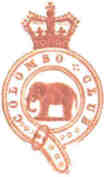
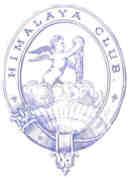 The gentlemen’s clubs of
London are represented in most crest albums. Less commonly found
are the crests of overseas clubs. Club life was very often a
feature of life in British colonies when the British Empire was
in its heyday. Expatriates involved in administration, the army,
the navy, commerce or trade could recreate to a small extent the
social life which they would have followed in Britain and some of
the overseas clubs were sumptious enclaves of British life.
The gentlemen’s clubs of
London are represented in most crest albums. Less commonly found
are the crests of overseas clubs. Club life was very often a
feature of life in British colonies when the British Empire was
in its heyday. Expatriates involved in administration, the army,
the navy, commerce or trade could recreate to a small extent the
social life which they would have followed in Britain and some of
the overseas clubs were sumptious enclaves of British life.
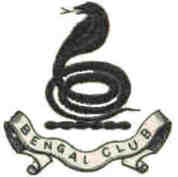 The massive presence of British in the
sub-continent led to the establishment of many clubs. In India we
find the Bengal Club in Calcutta, the Bengal United Service Club,
the Bombay Club, the East India United Service Club, the Madras
Club which has its own history (Short Historical Notice of
the Madras Club, HD Love, 1902), Howrah Club near Calcutta,
Oootacamund Club at the noted hill station of that name (see Topics: India), the United Service Club, Bangalore
and the Club of Western India at Poona.
The massive presence of British in the
sub-continent led to the establishment of many clubs. In India we
find the Bengal Club in Calcutta, the Bengal United Service Club,
the Bombay Club, the East India United Service Club, the Madras
Club which has its own history (Short Historical Notice of
the Madras Club, HD Love, 1902), Howrah Club near Calcutta,
Oootacamund Club at the noted hill station of that name (see Topics: India), the United Service Club, Bangalore
and the Club of Western India at Poona.
It is not known if the
British India Marine Service Club* and the British Indian
Engineers Club were located in India or Britain, or possibly
both. Nor is it known if the Hyderabad Military Club was in the
Indian or Pakistani town of that name.

In Pakistan were Rawal
Pindi Club, Sialkot Club, the Scind Club, Karachi, the Punjab
Club, Lahore and The Club, Murree. Murree had been developed as a
hill station by the British. They created, amidst some of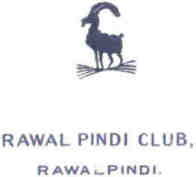 Pakistan’s most beautiful
alpine scenery, a typical English resort complete with a mall for
promenading and ceremonial parades, parks, churches and schools.
The station became the summer headquarters of the Punjab
government until 1876 when the administration was removed to
Simla.
Pakistan’s most beautiful
alpine scenery, a typical English resort complete with a mall for
promenading and ceremonial parades, parks, churches and schools.
The station became the summer headquarters of the Punjab
government until 1876 when the administration was removed to
Simla.
Burma had the Burma Club,
the Pegu Club, now an officers' mess of the Burmese Army, and the
Pyinmana Club.
In Sri Lanka, Ceylon as it
then was, were the Colombo (which still exists), the Kandy,
founded in 1877, and the Hill Clubs. 
Other outposts of the
Empire which had their clubs were Barbados with the Bridgetown
Club; British Guyana with the Georgetown and the 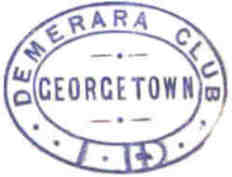 Demarara; and Natal with the Durban
Club which was founded in 1854 for gentleman to meet over a game
of billiards. The club has gone through several clubhouses and
continues.
Demarara; and Natal with the Durban
Club which was founded in 1854 for gentleman to meet over a game
of billiards. The club has gone through several clubhouses and
continues.
Hong Kong had its Hong
Kong Club, the Jamaica Club was in existence by 1875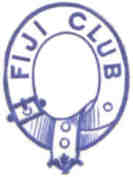 , and Montreal, Canada, had its St
James’s Club.
, and Montreal, Canada, had its St
James’s Club.
The Fiji Club was
originally established in Levuka in 1875 but moved to Suva in
1883 where it still operates.
 From Australia we find the
Melbourne Club, the New South Wales Club and the Warrigal Club
which from 1887 to 1889 was conducted in the house in Sydney
which was to become the home of the Royal Australian Historical
Society. The Tasmanian Club in Hobart was in existence by 1846.
From Australia we find the
Melbourne Club, the New South Wales Club and the Warrigal Club
which from 1887 to 1889 was conducted in the house in Sydney
which was to become the home of the Royal Australian Historical
Society. The Tasmanian Club in Hobart was in existence by 1846.
Nor were British clubs
limited to the Empire. There was an Anglo-American Club in
Dresden,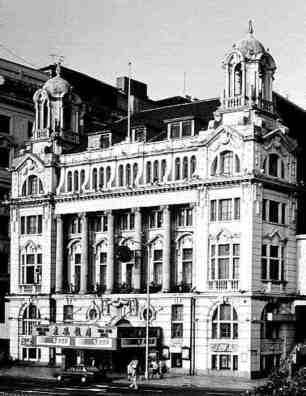 Germany,
an English Club in Rome and, perhaps the best known of this
class, the Shanghai Club in China. The British
Germany,
an English Club in Rome and, perhaps the best known of this
class, the Shanghai Club in China. The British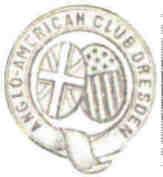 community founded the Shanghai in
the late 1860s, creating an atmosphere of colonial opulence. In
1910 they built grandiose new premises of massive white marble in
the neo-classical style, which was opened with great ceremony the
following year. No expense was spared in making the club an
elegant and comfortable refuge for its privileged members.
community founded the Shanghai in
the late 1860s, creating an atmosphere of colonial opulence. In
1910 they built grandiose new premises of massive white marble in
the neo-classical style, which was opened with great ceremony the
following year. No expense was spared in making the club an
elegant and comfortable refuge for its privileged members.
The
Shanghai Club.
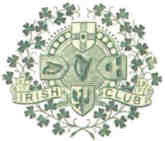
 The British were not the only ones to
recreate their clubs abroad. In London various expatriate clubs
have been noted:The Irish Club, the Canada Club founded in 1810
and the German Athenaeum which was founded in 1860. In Lucknow
there was a U.S. Club.
The British were not the only ones to
recreate their clubs abroad. In London various expatriate clubs
have been noted:The Irish Club, the Canada Club founded in 1810
and the German Athenaeum which was founded in 1860. In Lucknow
there was a U.S. Club.
Ireland had its
gentlemen’s clubs in the English tradition and examples of
crests have 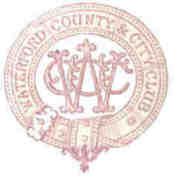 been noted for the Clare Club, the Limerick
Club, Waterford County & City Club, Ulster Reform Club,
Belfast, and the Kildare Street Club, Dublin.
been noted for the Clare Club, the Limerick
Club, Waterford County & City Club, Ulster Reform Club,
Belfast, and the Kildare Street Club, Dublin.
Crests have also been seen
for the Florence Club, the Himalaya Club, the Khedivial Club in
Cairo, the Victoria Club, Dinan, and the Union Club, Malta which
was founded in 1826.
In my first version of
this page I stated that the origins of the Pipe Clay Club were
not known, though they 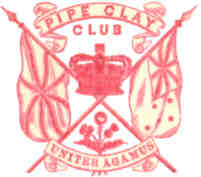 were thought to lay in Australia. Since then
Richard Num of Adelaide kindly pointed me to the Naval &
Military Club, Melbourne, who use the same motto and have a
magazine called the Pipeclay. An enquiry to the club brought a
most helpful response. They had started out as the Pipeclay Club
in May 1881, retaining the name until 1886 when they became the
United Service Club. Three further name changes brought it to the
present title, though its original name is recalled in the name
of the members' magazine and the Pipeclay Bar.
were thought to lay in Australia. Since then
Richard Num of Adelaide kindly pointed me to the Naval &
Military Club, Melbourne, who use the same motto and have a
magazine called the Pipeclay. An enquiry to the club brought a
most helpful response. They had started out as the Pipeclay Club
in May 1881, retaining the name until 1886 when they became the
United Service Club. Three further name changes brought it to the
present title, though its original name is recalled in the name
of the members' magazine and the Pipeclay Bar.
So we have a very close
dated crest: it must have appeared between 1881 and 1886. The
choice of pipe clay as a name no doubt arises from the practice
in the armed forces of its use to whiten webbing and straps.
*I am grateful to Juzer Mohammed Husain for
confirmation that this club was indeed in India, being noted at
King's Building, Hornby Road, Bombay in 1908.
Return to HOME
or to TOPICS PAGE

 The gentlemen’s clubs of
London are represented in most crest albums. Less commonly found
are the crests of overseas clubs. Club life was very often a
feature of life in British colonies when the British Empire was
in its heyday. Expatriates involved in administration, the army,
the navy, commerce or trade could recreate to a small extent the
social life which they would have followed in Britain and some of
the overseas clubs were sumptious enclaves of British life.
The gentlemen’s clubs of
London are represented in most crest albums. Less commonly found
are the crests of overseas clubs. Club life was very often a
feature of life in British colonies when the British Empire was
in its heyday. Expatriates involved in administration, the army,
the navy, commerce or trade could recreate to a small extent the
social life which they would have followed in Britain and some of
the overseas clubs were sumptious enclaves of British life. The massive presence of British in the
sub-continent led to the establishment of many clubs. In India we
find the Bengal Club in Calcutta, the Bengal United Service Club,
the Bombay Club, the East India United Service Club, the Madras
Club which has its own history (Short Historical Notice of
the Madras Club, HD Love, 1902), Howrah Club near Calcutta,
Oootacamund Club at the noted hill station of that name (see
The massive presence of British in the
sub-continent led to the establishment of many clubs. In India we
find the Bengal Club in Calcutta, the Bengal United Service Club,
the Bombay Club, the East India United Service Club, the Madras
Club which has its own history (Short Historical Notice of
the Madras Club, HD Love, 1902), Howrah Club near Calcutta,
Oootacamund Club at the noted hill station of that name (see 
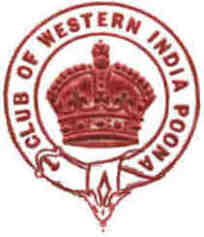
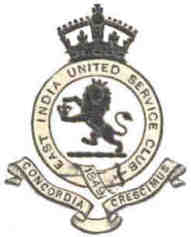

 Pakistan’s most beautiful
alpine scenery, a typical English resort complete with a mall for
promenading and ceremonial parades, parks, churches and schools.
The station became the summer headquarters of the Punjab
government until 1876 when the administration was removed to
Simla.
Pakistan’s most beautiful
alpine scenery, a typical English resort complete with a mall for
promenading and ceremonial parades, parks, churches and schools.
The station became the summer headquarters of the Punjab
government until 1876 when the administration was removed to
Simla.

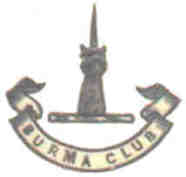


 Demarara; and Natal with the Durban
Club which was founded in 1854 for gentleman to meet over a game
of billiards. The club has gone through several clubhouses and
continues.
Demarara; and Natal with the Durban
Club which was founded in 1854 for gentleman to meet over a game
of billiards. The club has gone through several clubhouses and
continues.  , and Montreal, Canada, had its St
James’s Club.
, and Montreal, Canada, had its St
James’s Club.  From Australia we find the
Melbourne Club, the New South Wales Club and the Warrigal Club
which from 1887 to 1889 was conducted in the house in Sydney
which was to become the home of the Royal Australian Historical
Society. The Tasmanian Club in Hobart was in existence by 1846.
From Australia we find the
Melbourne Club, the New South Wales Club and the Warrigal Club
which from 1887 to 1889 was conducted in the house in Sydney
which was to become the home of the Royal Australian Historical
Society. The Tasmanian Club in Hobart was in existence by 1846. Germany,
an English Club in Rome and, perhaps the best known of this
class, the Shanghai Club in China. The British
Germany,
an English Club in Rome and, perhaps the best known of this
class, the Shanghai Club in China. The British community founded the Shanghai in
the late 1860s, creating an atmosphere of colonial opulence. In
1910 they built grandiose new premises of massive white marble in
the neo-classical style, which was opened with great ceremony the
following year. No expense was spared in making the club an
elegant and comfortable refuge for its privileged members.
community founded the Shanghai in
the late 1860s, creating an atmosphere of colonial opulence. In
1910 they built grandiose new premises of massive white marble in
the neo-classical style, which was opened with great ceremony the
following year. No expense was spared in making the club an
elegant and comfortable refuge for its privileged members.
 The British were not the only ones to
recreate their clubs abroad. In London various expatriate clubs
have been noted:The Irish Club, the Canada Club founded in 1810
and the German Athenaeum which was founded in 1860. In Lucknow
there was a U.S. Club.
The British were not the only ones to
recreate their clubs abroad. In London various expatriate clubs
have been noted:The Irish Club, the Canada Club founded in 1810
and the German Athenaeum which was founded in 1860. In Lucknow
there was a U.S. Club. been noted for the Clare Club, the Limerick
Club, Waterford County & City Club, Ulster Reform Club,
Belfast, and the Kildare Street Club, Dublin.
been noted for the Clare Club, the Limerick
Club, Waterford County & City Club, Ulster Reform Club,
Belfast, and the Kildare Street Club, Dublin. were thought to lay in Australia. Since then
Richard Num of Adelaide kindly pointed me to the Naval &
Military Club, Melbourne, who use the same motto and have a
magazine called the Pipeclay. An enquiry to the club brought a
most helpful response. They had started out as the Pipeclay Club
in May 1881, retaining the name until 1886 when they became the
United Service Club. Three further name changes brought it to the
present title, though its original name is recalled in the name
of the members' magazine and the Pipeclay Bar.
were thought to lay in Australia. Since then
Richard Num of Adelaide kindly pointed me to the Naval &
Military Club, Melbourne, who use the same motto and have a
magazine called the Pipeclay. An enquiry to the club brought a
most helpful response. They had started out as the Pipeclay Club
in May 1881, retaining the name until 1886 when they became the
United Service Club. Three further name changes brought it to the
present title, though its original name is recalled in the name
of the members' magazine and the Pipeclay Bar.